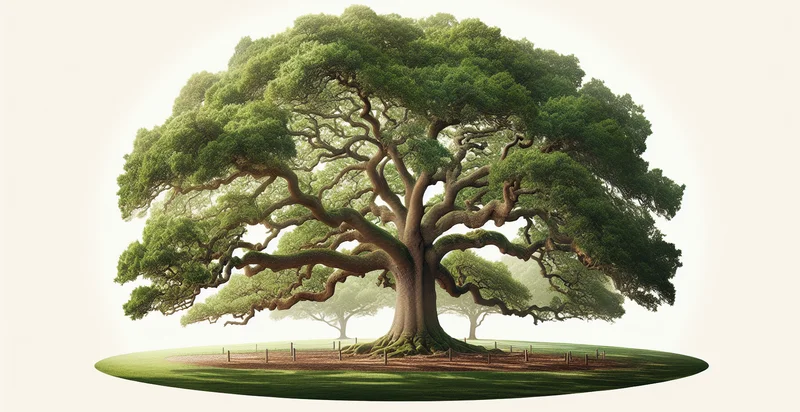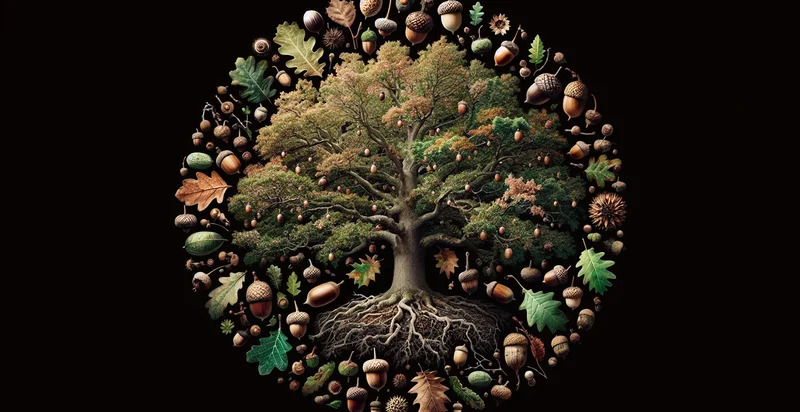Identify if it's an oak tree
using AI
Below is a free classifier to identify if it's an oak tree. Just upload your image, and our AI will predict if it's an oak tree - in just seconds.

Contact us for API access
Or, use Nyckel to build highly-accurate custom classifiers in just minutes. No PhD required.
Get started
import nyckel
credentials = nyckel.Credentials("YOUR_CLIENT_ID", "YOUR_CLIENT_SECRET")
nyckel.invoke("if-it's-an-oak-tree", "your_image_url", credentials)
fetch('https://www.nyckel.com/v1/functions/if-it's-an-oak-tree/invoke', {
method: 'POST',
headers: {
'Authorization': 'Bearer ' + 'YOUR_BEARER_TOKEN',
'Content-Type': 'application/json',
},
body: JSON.stringify(
{"data": "your_image_url"}
)
})
.then(response => response.json())
.then(data => console.log(data));
curl -X POST \
-H "Content-Type: application/json" \
-H "Authorization: Bearer YOUR_BEARER_TOKEN" \
-d '{"data": "your_image_url"}' \
https://www.nyckel.com/v1/functions/if-it's-an-oak-tree/invoke
How this classifier works
To start, upload your image. Our AI tool will then predict if it's an oak tree.
This pretrained image model uses a Nyckel-created dataset and has 2 labels, including Is Not Oak Tree and Is Oak Tree.
We'll also show a confidence score (the higher the number, the more confident the AI model is around if it's an oak tree).
Whether you're just curious or building if it's an oak tree detection into your application, we hope our classifier proves helpful.
Recommended Classifiers
Need to identify if it's an oak tree at scale?
Get API or Zapier access to this classifier for free. It's perfect for:
- Urban Forestry Management: City planners can utilize the oak tree identifier to assess urban green spaces, helping them maintain and increase biodiversity. By accurately identifying oak trees, municipalities can prioritize tree care and replanting efforts to ensure the health of urban ecosystems.
- Environmental Monitoring: Environmental researchers can employ the oak tree identifier to track the distribution and health of oak populations in various habitats. This data can be critical for understanding ecosystem changes over time and assessing the impacts of climate change.
- Wildlife Habitat Assessment: Ecologists can use the identifier to determine the presence of oak trees in specific areas, which are essential for wildlife habitats. This information can guide conservation efforts and habitat restoration projects aimed at protecting species that depend on oak trees for food and shelter.
- Landscaping and Gardening Services: Landscaping companies can enhance their services by including oak tree identification in their offerings. By identifying and providing care advice for oak trees, they can help customers create diverse and sustainable landscapes that can thrive in their local environments.
- Educational Programs: Schools and nature centers can incorporate the oak tree identifier into educational programs for students of all ages. By teaching students to identify oak trees, these programs can foster a greater appreciation for local flora and promote environmental stewardship.
- Timber and Wood Products Industry: Businesses in the timber industry can use the identifier to ensure sustainable sourcing of oak wood. Accurate identification can help track the origin of oak timber, promoting responsible harvesting practices and compliance with environmental regulations.
- Agricultural Land Management: Farmers can apply the oak tree identifier in managing agroforestry systems, where oak trees can be integrated with crops. Understanding where oak trees are located on their property can help farmers optimize land use, improve soil health, and enhance biodiversity on their farms.


